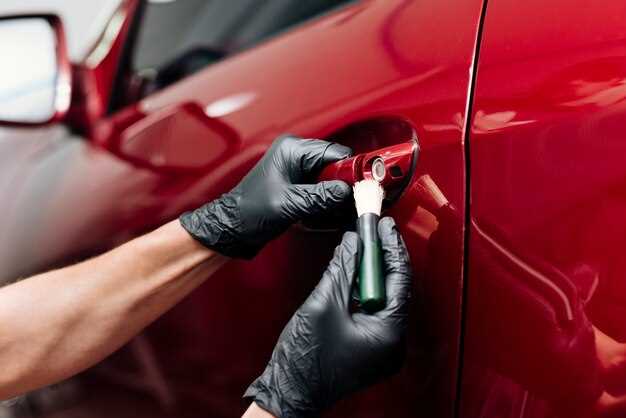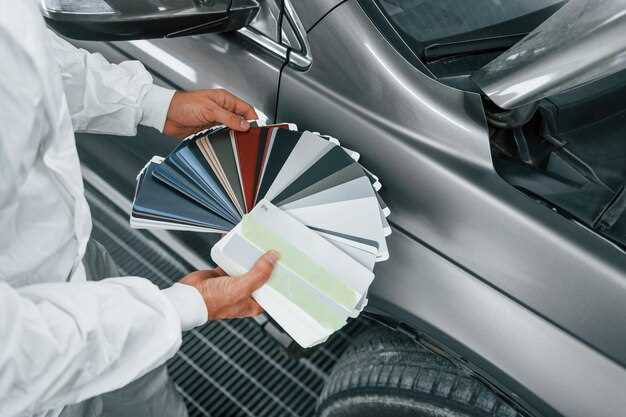
When it comes to enhancing the appearance of your car, selecting the right paint is crucial. The paint not only affects the aesthetic appeal but also serves as a protective layer against the elements, ensuring longevity and maintaining your vehicle’s value.
One of the key considerations in this process is matching the paint to your vehicle’s original color. A perfect match can be challenging, especially for older models or those with custom finishes. Utilizing advanced color matching techniques and tools can greatly assist in achieving the desired outcome, preserving the integrity of your car’s design.
Additionally, understanding the different types of paints available, such as acrylic, urethane, or enamel, can help you make an informed decision. Each type has its unique properties and suitability, depending on your personal preferences and the specific requirements of your vehicle’s surface.
Understanding Types of Automotive Paint and Their Properties

Choosing the right type of automotive paint is essential for achieving the desired color and finish for your car. Various types of paint are available, each with unique properties that cater to different needs.
One of the most common types is acrylic enamel. This paint provides a glossy finish and is easy to apply. Acrylic enamel dries quickly and offers good resistance to UV rays, making it a popular choice for car owners looking for vibrant color without extensive maintenance.
Another widely used option is urethane paint. Known for its durability and chemical resistance, urethane paint is ideal for those who want to protect their vehicle from the elements. It can produce a deep, rich color and is excellent for matching factory finishes, as it adheres well and maintains its luster over time.
For a more professional approach, many opt for base coat/clear coat systems. This method involves applying a base coat, which provides color, followed by a clear coat that adds protection and shine. This two-stage process allows for precise color matching, ensuring that your vehicle looks exceptional and maintains its appearance for years.
Water-based paints are gaining popularity due to their eco-friendliness. These paints emit fewer harmful fumes and are safer for the environment without sacrificing quality. However, they may require specific application techniques and conditions to ensure proper adhesion and finish.
When selecting paint, consider not only the color but also how it will match with the existing paint on your car, particularly if you are making repairs or touch-ups. Different manufacturers may have slight variations in color, so it’s crucial to obtain the correct paint code for accurate matching.
In conclusion, understanding the types of automotive paint and their properties will help you make an informed decision when choosing the best product for your vehicle. Whether you prefer the quick application of acrylic enamel or the long-lasting benefits of urethane or water-based paints, the right choice enhances the aesthetic appeal and durability of your car.
Tips for Accurate Color Matching for a Flawless Finish

Achieving a perfect color match for your vehicle’s paint requires careful consideration and attention to detail. Begin by collecting the necessary tools, including a paint color code reference and a color matching guide, which are essential for identifying the correct shade.
When selecting paint, inspect the existing color in various lighting conditions. Natural sunlight can reveal subtle differences that may not be apparent under artificial light. Additionally, using a color wheel can assist in visual comparison, helping to discern shades and undertones that might affect the final outcome.
Test patches are crucial for verifying color accuracy. Apply a small amount of paint to an inconspicuous area and allow it to dry completely to assess how well it matches the vehicle’s original color. This step can prevent significant errors and ensure that the chosen paint harmonizes perfectly with the existing surface.
Consider the age of your car’s paint as well. Over time, exposure to elements can cause fading or discoloration, making it challenging to find an exact match. To combat this, factor in the vehicle’s history and ask for advice from professionals at auto body shops, who often have experience matching older or faded colors.
Utilizing a spectrophotometer can enhance precision in color matching. This device analyzes the existing paint and provides a formula to create a matching color, taking into account any variations in hue that may not be easily visible to the naked eye. Using technology can significantly increase your chances of achieving a flawless finish.
Finally, when purchasing paint, ensure that it comes from a reputable manufacturer known for consistent quality. Batch variations can occur, so it’s wise to obtain enough paint from the same batch to ensure uniformity across any repairs. By following these tips, you can achieve a flawless finish that maintains the beauty and integrity of your vehicle’s appearance.
Factors to Consider When Selecting the Right Paint Brand
When it comes to repainting your car, choosing the right paint brand is crucial. There are several factors to evaluate to ensure that you achieve the desired color, finish, and durability.
Quality of Paint: The first consideration should be the overall quality of the paint. Look for brands that are known for their high-performance products. A good quality paint will offer better adhesion, flexibility, and resistance to fading.
Types of Paint: Different brands may offer various types of paint, including acrylic, enamel, and urethane. Each type has its own benefits and drawbacks. Make sure to select a paint type that aligns with your car’s material and your finishing preferences.
Color Selection: The range of colors offered is another important factor. Brands that provide a wider variety of colors often allow for more customization. Check whether the brand you’re considering has the specific shade you want for your car.
Application Process: Some paints require a more complicated application process than others. Brands that offer user-friendly options can save you time and effort. Look for information on how easy the paint is to apply, whether it’s spray or brush-on, and if it requires any special equipment.
Price Point: While it might be tempting to go for a cheaper option, consider the long-term value. Investing in a reputable brand that may be slightly more expensive can lead to better outcomes, ultimately saving you money on potential reapplications or touch-ups.
Reviews and Recommendations: Consumer feedback can provide valuable insight into the performance of a paint brand. Look for reviews from other car enthusiasts or professionals who have used the paint. Personal recommendations can also guide your selection process.
Warranty and Support: A brand that offers a warranty for its paint products often indicates confidence in its quality. Furthermore, check if they provide support or resources, such as guides or tutorials, to help you with the application process.
By considering these factors, you’ll be better equipped to choose a paint brand that not only enhances the look of your car but also ensures longevity and satisfaction.






